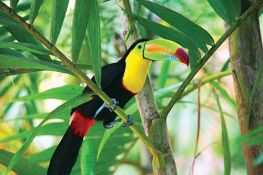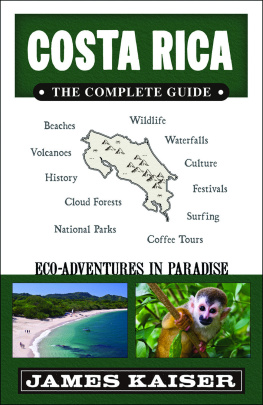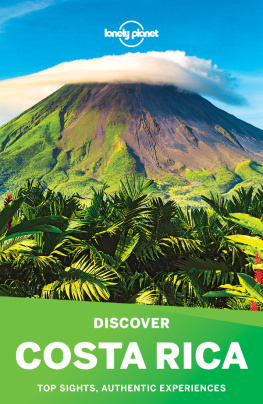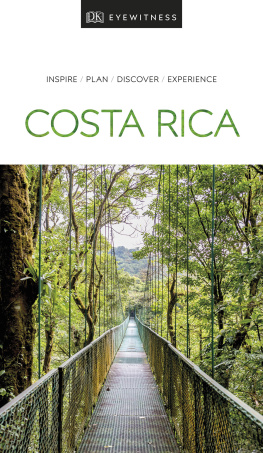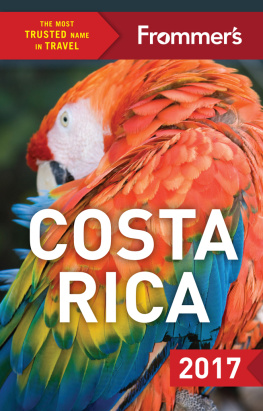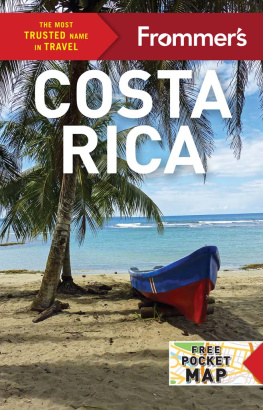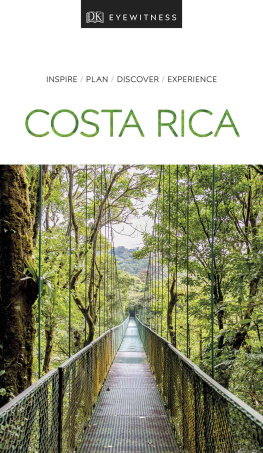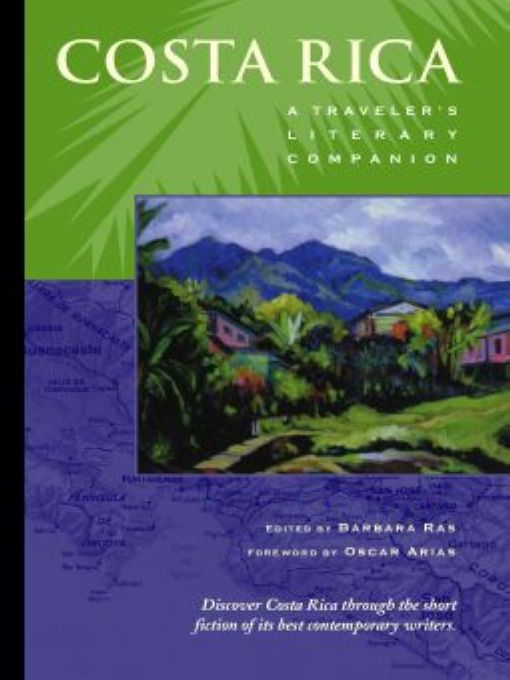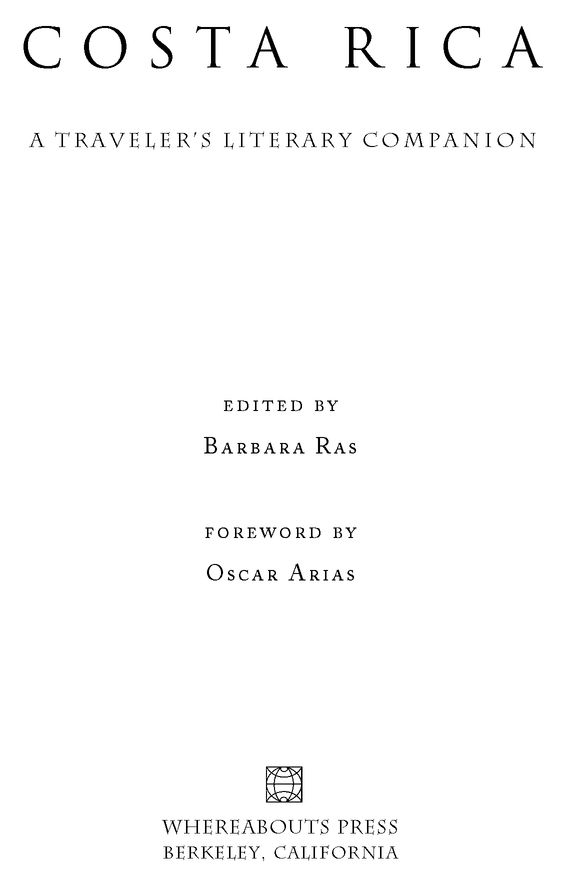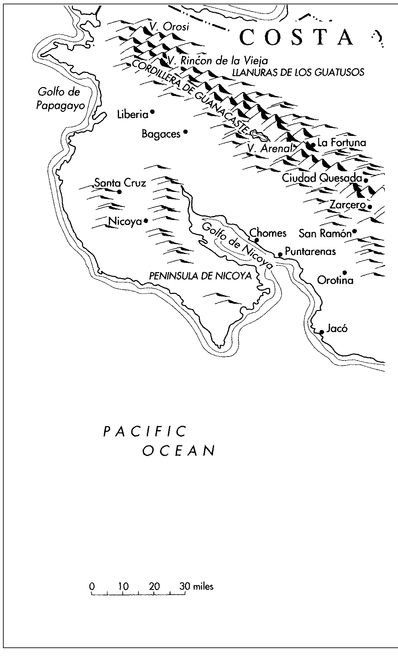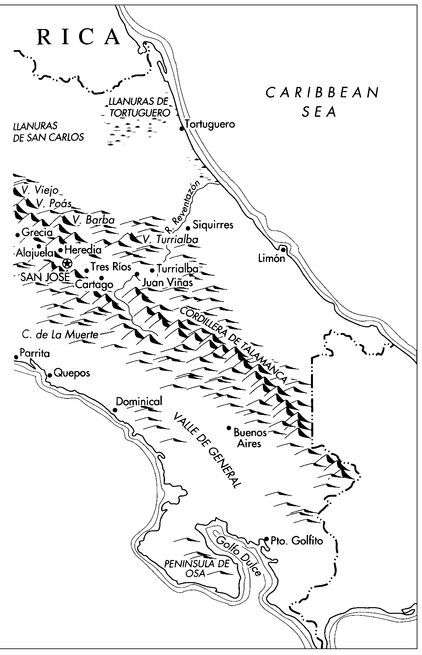Table of Contents
GOOD STORIES REVEAL as much, or more, about a locale as any map or guidebook. Whereabouts Press is dedicated to publishing books that will enlighten a traveler to the soul of a place. By bringing a countrys stories to the English-speaking reader, we hope to convey its culture through literature. Books from Whereabouts Press are essential companions for the curious traveler, and for the person who appreciates how fine writing enhances ones experiences in the world.
Coming newly into Spanish, I lacked two essentialsa childhood in the language, which I could never acquire, and a sense of its literature, which I could.
Alastair Reid, Whereabouts: Notes on Being a Foreigner
OTHER TRAVELERS LITERARY COMPANIONS
Amsterdam
Argentina
Australia
Brazil
Chile
China
Costa Rica
Cuba
France
Greece
India
Ireland
Israel
Italy
Japan
Mexico
Prague
South Africa
Spain
Vienna
Vietnam
To Helen and Henry, and in memory of Anna,
who traveled first
Foreword
Oscar Arias
If the attempt to describe physical reality in writing generally turns out to be less than fully successful, we would expect that a desire to apprehend reality through fiction would be similarly inadequate. Normally, the narrative is not history or geography or anthropology. Neither is it politics or economics. Why, therefore, should one seek in fiction a means for learning about a country or a national psyche? Why, when it comes to apprehending the reality of a region or a country, should we not simply resort to direct observation or, when that is not possible, to specialized texts that describe a place or a people from a scientific perspectiveeven, perhaps, reinforced with the luxury of statistics?
We are accustomed to seeing travelers and tourists exploring the woods, fields, rivers, and cities of our country, finding their way by means of maps, tourist guides, and hotel brochures and, in the unusual case, books and documents describing our very rich and abundant flora and fauna. This is only natural, since such sources help the visitor reach a deeper and more intense understanding of the landscape we Costa Ricans inhabit.
Some visitors also appear to be interested in our history, in the development of our political institutions and in the characteristics of our socioeconomic system. And they display a more than average curiosity when confronted with Costa Ricas institutional peculiarities, among them the pacifist and antimilitarist nature of our politics, our long democratic tradition, and our singular preoccupation with the education and health of our citizens. There are many publications that address these aspects of our reality, making it possible to develop a deeper appreciation of our nation.
One might think that the writings I have described would be sufficient for any visitor. Recently, however, Whereabouts Press set us thinking about the advantages of offering the traveler the opportunity to penetrate the Costa Rican soul and to plumb our most intimate reality through the many and varied paths of literature. Passing from concept to action, Whereabouts Press has produced this magnificent anthology of writing by Costa Rican authors under the title Costa Rica: A Travelers Literary Companion.
The collection offers a broadly representative sampling of twentieth-century Costa Rican short fiction. The stories are of the highest literary quality, and they have been imaginatively organized according to the geographical allusions they contain. Given that Costa Rica is only slightly larger than nineteen thousand square miles, one might expect it would be difficult to identify diverse cultural literary specificities. It is well known, however, that our country occupies an isthmus and is in geological terms quite younga combination which allows for a nearly unparalleled topographic, climatic, and biological diversity that has had important consequences for our people. It is not, therefore, surprising that Costa Rican writers reflect in their works the environmental and cultural differences that contribute to creating Costa Ricas collective identity. Their works take place in the plains of Guanacaste, in the high valleys of the central plateau, and in the flatlands of the north and the Caribbean coast. And as our biological diversity derives from bridging the southern and northern land masses of the American continent, Costa Rican culture today is the result of a convergence in which we note visible vestiges of Asiatic, African, American, and European cultures, blending with and characterized by adaptation to an exceptional natural world.
On a different plane, this anthology offers an accurate synthesis of the literary perceptions that accompanied Costa Ricas transition from a rural, rather isolationist, society at the beginning of the century to a highly urbanized society increasingly open to the cultural and commercial currents of the present decade of globalization. This transition, whether for good or ill, has brought with it a fundamental modification of the Ticos relationship with their own surroundings and with the world at large.
May I add in passing that if one detects in these stories and tales various thematic, stylistic, and aesthetic correspondences with the literature of other Central American countries, only subtly do we begin to perceive the Costa Ricans mental adjustment to the new sociopolitical regional panorama in which dreams of autarchy and isolationif, in fact, those dreams persisthave no place. Nevertheless, it is encouraging to me to observe that most of the living writers included here have, in different ways, supported the political actions that have led to peace in much of Central America and are now aimed at the political and cultural integration of the region.
I am sure that when travelers visit Costa Rica, they will receive a more authentic, more profound impression of our country and our society for having been in the company of the writers whose voices they encounter in Costa Rica: A Travelers Literary Companion.
Translated by Margaret Sayers Peden
Preface
The first time I spoke with Carmen Naranjo, one of Costa Ricas leading writers, it was by telephone as I stood in the full Costa Rican sun at a public phone on a side street in Quepos, not far from Panadera Fiorela, the best bakery in town (the one that makes fabulous coconut concoctions and whole wheat bread). I was waiting for her to give me the address to her offices at EDUCA, the publishing house for seven Central American universities, and instead of a street number and name, she said, La cuarta entrada de Los Yoses, or, roughly, the fourth entrance in the neighborhood of the yos trees. Of course, I had no idea what she meant. (Its typical for San Jos addresses to be given in relative terms500 meters from such and such a landmark is the normso my cab driver wasnt the least bit thrown by the destination I gave him.)








